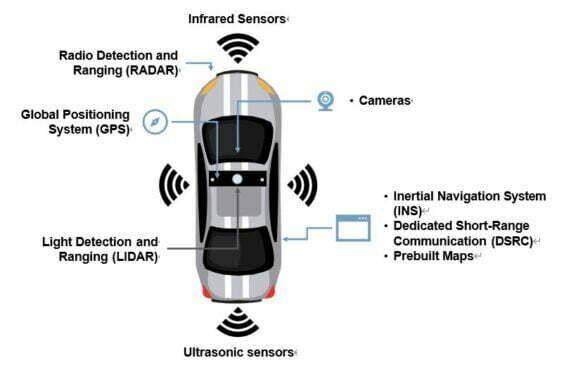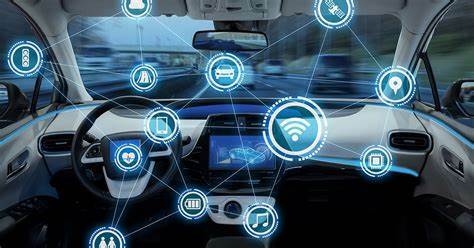ADAS and Autonomous Sensor Maintenance Equipment Market
The ADAS and Autonomous Sensor Maintenance Equipment Market is expected to reach $34.6 million by 2031, reveals the premium market intelligence study ADAS and Autonomous Sensor Maintenance Equipment Market – A Global and Regional Analysis: Focus on Product Type, Application Type, Level of Autonomy, and Region – Analysis and Forecast, 2021-2031. The study also highlights that the market is set to witness a CAGR of 30.94% during the forecast period 2021-2031.
Summary
According to the market scenario, by 2031, half of a car’s cost will be accounted for by its electronics, in which sensors and semiconductors play a key role. As a result, to avoid increasing breakdowns, these sensors will need to be safeguarded. Advanced driver-assistance systems (ADAS) have already tremendously broadened the range of sensor applications. Sensors are used to automate or assist with a variety of driver activities, including parking, blind-spot monitoring, safe braking, and accident avoidance in ADAS technologies.
In the vehicle industry’s increasingly competitive environment, automakers are working on lowering accidents caused by faulty sensor perceptions. When dirt, rain drops, snow, or bird droppings obscure their view, automotive sensors malfunction. In such applications, liquid-based sensor cleaning systems or gas-based sensor cleaning systems are utilized to cleanse the surface of the sensors and restore their functionality. Such cleaning systems are increasingly being used in autonomous vehicles, where sensor performance is critical, assisting the growth of the automotive sensor cleaning system market across regions.
New safety requirements are being adopted by governments in order to reduce roadway mishaps. The European Commission has issued new street safety standards and guidelines as part of the General Safety Regulation. A section of the ADAS features, such as progress crisis slowing down and path keeping assistance, has become mandatory as a result of these standards. Moreover, all new heavy goods vehicles (HGVs) sold in the European Union must now feature a lane departure warning system (LDWS) and self- contained crisis stopping systems (AEBS). Furthermore, the U.S. has the strictest automotive security regulations globally. This aspect is increasing the acceptance of ADAS frameworks in the majority of business and passenger vehicles, which is expected to propel the ADAS and autonomous sensor maintenance equipment market forward.
Passenger Vehicles Demand for ADAS and Autonomous Sensor Maintenance Equipment Expected to be Dominant Over Commercial Vehicles
Passenger cars are the most attractive vehicle application with the highest share. The growing concern about safety, as well as the government’s tight emission standards, is driving up demand for these sensors in passenger vehicles. Furthermore, governments from all around the world are working hard to support this industry. To assure safety, efficiency, and accuracy in passenger automobiles, federal authorities have established a number of rules and regulations to increase the usage of this sensor maintenance equipment in vehicles.
Trends: Industry Dynamics Defining Future Trends ADAS and Autonomous Sensor Maintenance Equipment Market
The ADAS and autonomous sensor maintenance equipment market is going through the proto phase. Companies such as Ford, dlhBOWLES, Kendiron, Seeva Technologies, and Ficosa Internacional SA are developing sensor maintenance equipment for different sensors. Moreover, companies are getting involved in extensive research and development to provide better solutions in the market. Even automakers are looking for solutions that can clean automatically without any manual requirement.
Continental, one of the leading companies in the ADAS and autonomous sensor maintenance equipment market, is working on a technology that will use fluid to clean the 360-degree cameras, which will be used in future systems. The cameras will be deployed in various parts of the vehicle, such as forward, side, rear, and rooftop. A built-in nozzle housing will clean the surface by simply spraying it with fluid. Seeva Technologies has designed a system that uses engine heat to reheat washer fluid, allowing it to clear windshields more effectively. While this isn’t designed to clean sensors right now, the company will use this fundamental technology for ADAS sensor cleaning in the future.
Furthermore, the aerodynamic ideas have already been implemented by Ford. Ford’s ‘tiara’ sensor suite deflects debris by diverting air through gaps near the sensor lens. Whenever bugs make a beeline for a camera lens, the air blowing out of the tiara pushes them away, ensuring that they don’t get into contact with the lens. On the other hand, companies such as 3M are using a transparent adhesive film over the car sensors to keep them clean.
Various solutions are emerging in the ADAS and autonomous sensor maintenance equipment market. Companies involved in this industry are using various approaches to provide the best solutions to customers and automakers.
Business Drivers – Growing Autonomy and Sensor Adoption
Since the ADAS and autonomous industry is witnessing rapid growth, the market is shifting toward advanced technology and more sensor deployments. Ease in the usage of vehicles is the most important factor for automakers to address, as autonomous vehicles are the automotive industry’s next future. The unintended effect of providing cars with various sensors for driver assistance or autonomous driving has led to automakers adding more subsystems to keep those sensors free of obstacles.
The number of car sensors is rising tremendously, owing to new safety rules, in part. For example, the rear camera obligation in the U.S. market states that a rear-view camera is compulsory on all new cars manufactured after May 1, 2018. However, there is no necessity for a camera cleaning system. In cars lacking a camera cleaning system, the driver may have to exit the vehicle and clean the camera manually. ADAS and autonomous sensor maintenance equipment eliminate such tedious processes and allow vehicle owners to clean their sensors without getting out of the vehicle.
One of the key factors for this market is the growing need to reduce road accidents, and sensor obstruction while driving is a major concern in a self-driving vehicle. The autonomous industry is aware of the problem, but few automakers have decided to address it. While a clogged sensor might disable an autonomous vehicle (AV), it also leads to an uncomfortable interruption of an assisted-driving or ADAS feature for human drivers. The ADAS and autonomous sensor maintenance equipment are utilized to counter the rising number of road accident fatalities for the effective functioning of the vehicles.
Various companies such as dlhBOWLES are developing automotive-grade technology retrofitted to prepare for Level 4 and Level 5 autonomous vehicles. In the future, the companies will look at how this technology can decide the required type of cleaning based on the type of obstruction.

Global ADAS and Autonomous Sensor Maintenance Equipment Market
1. Passenger Vehicle
Autonomous passenger cars rely on a variety of automotive sensors, including radar, camera sensors, and LiDAR. Autonomous vehicles also use sensors for linking the vehicles with vehicle-to-vehicle and vehicle-to- infrastructure network systems to collect data about the system’s self-driving capabilities. These vehicles either have systems and features such as automated lighting, adaptive cruise control, and collision avoidance, or they can drive themselves using software and sensors without the assistance of a driver. BMW, Ford Motor Company, General Motors, Daimler AG, and Renault-Nissan are among the major automakers actively working on ADAS and autonomous vehicles.
The growing concern about safety, as well as the government’s tight emission standards, are driving up demand for these sensors in passenger vehicles. Furthermore, governments from all around the world are working hard to support this industry. To assure safety, efficiency, and accuracy in passenger automobiles, federal authorities have established a number of rules and regulations to increase the usage of these sensor technologies in vehicles.
Leading car OEMs are working with tier 1 component providers to improve their technical competence and stay competitive. For example, BMW worked with KPIT Technologies and TTTech in October 2018 to build software for Level 3 and Level 4/5 autonomous vehicles, including highway pilot and urban pilot. Furthermore, regulatory authorities such as the National Highway Traffic Safety Administration (NHTSA) in Washington, D.C., U.S., and the European Union are pushing for greater safety features in automobiles, which is one of the key drivers driving market expansion. Additionally, OEMs’ increased investments for developing sensors and systems to maintain sensors that help incorporate ADAS and autonomous driving features in their cars to develop high levels of autonomous vehicles fuel the market growth.
2. Level 3 Autonomous Vehicle
The increase in technology perspective in Level 3 autonomy cars is significant. L3 vehicles can detect their surroundings and make smart judgments for themselves, such as accelerating past a slow-moving vehicle. They do, however, require a human driver. If the system is unable to complete the task, the autonomous vehicle driver must always be attentive and ready to take charge.
Audi (Volkswagen) announced in 2020 that the next generation of their flagship sedan, the A8, will be the first production Level 3 car in the world. It includes a traffic congestion pilot that uses a LiDAR scanner in conjunction with sophisticated sensor fusion and computing power. Major ADAS and autonomous sensor
maintenance equipment manufacturers are aiming for L3 and L4 compliant sensors that can handle data from in-vehicle LiDAR, radars, and cameras. Ford Motor Company and Waymo are two leading companies working on Level 3 ADAS and autonomous sensor maintenance equipment development.
Details of the report: ADAS and Autonomous Sensor Maintenance Equipment Market – A Global and Regional Analysis: Focus on Product Type, Application Type, Level of Autonomy, and Region – Analysis and Forecast, 2021-2031

